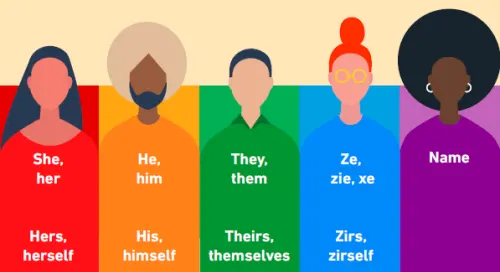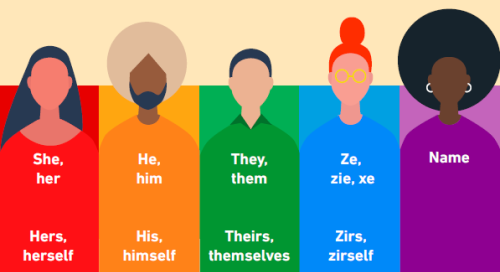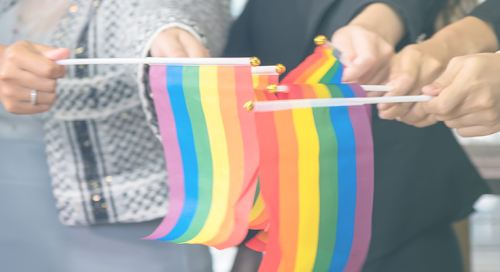Guide to Pronouns
Gender should be defined by the people who live it.
It’s important not to “misgender” your co-workers by referring to them with the wrong pronouns. In English, the most commonly used pronouns (being he or she) refers to a person’s gender. However, for queer, gender nonconforming, non-binary and transgender people, these pronouns may not fit. Using the wrong pronouns can even create discomfort, stress and anxiety. One recent study showed that in transgender youth, using correct pronouns and names reduces depression and suicide risks.
 The most common gender-neutral pronoun used by genderqueer and gender nonconforming people is “they/them/their”, but that’s not the only option. Some people choose to use the gender-neutral pronouns “ze/hir/hirs” (pronounced “zee/here/heres”) or “ey/em/eir” (pronounced “ay/em/airs”), among others. Some choose not to have any pronouns at all and prefer being called by their name. It is important to ask the pronoun they prefer to avoid any disrespect.
The most common gender-neutral pronoun used by genderqueer and gender nonconforming people is “they/them/their”, but that’s not the only option. Some people choose to use the gender-neutral pronouns “ze/hir/hirs” (pronounced “zee/here/heres”) or “ey/em/eir” (pronounced “ay/em/airs”), among others. Some choose not to have any pronouns at all and prefer being called by their name. It is important to ask the pronoun they prefer to avoid any disrespect.
Pronoun Tips for the Workplace
We know that even for the most well-intentioned people, this can be confusing. We’ve put together a short guide how you can make your workforce feel more included by using the right pronouns.
Ask if you’re not sure:
Often, allyship begins with curiosity. Avoid making assumptions, and don’t be afraid to ask your colleague what their pronouns are if you’re not sure. It helps normalize pronoun use and shows that you respect people and want to learn.
Put yourself in their shoes:
If you have trouble understanding why incorrect pronoun usage would upset someone, think about your pronoun (likely “he” or “she”). Now imagine someone calling you the other one, over and over and over, even after you’ve corrected them.
Share your own pronouns routinely:
This encourages others to do the same and demonstrates that you understand the importance of sharing pronouns.
Implement company policies encouraging people to respect pronouns:
Allow—rather than require—people to include their pronouns in their email signatures. It has become quite common in diverse and inclusive environments to add your gender pronouns in your email signature. This practice helps minimize misgendering and is an important strategy toward inclusivity.
Learn from your mistakes:
If you make a mistake with someone’s pronouns, it’s OK to apologize and acknowledge your mistake. Then, once you know better, commit to do better. For more information, including additional definitions or terminology, read the United Nations’ Guidelines for Gender-Inclusive Language and the Human Rights Campaign’s Glossary of Terms. Thank you for reading this blog. You are now one step closer towards building an inclusive environment for your workforce. Download and share our LGBTQ+ Inclusive #WordsatWork Guide to learn about how you can promote a culture of respect and belonging for the community and more.

















